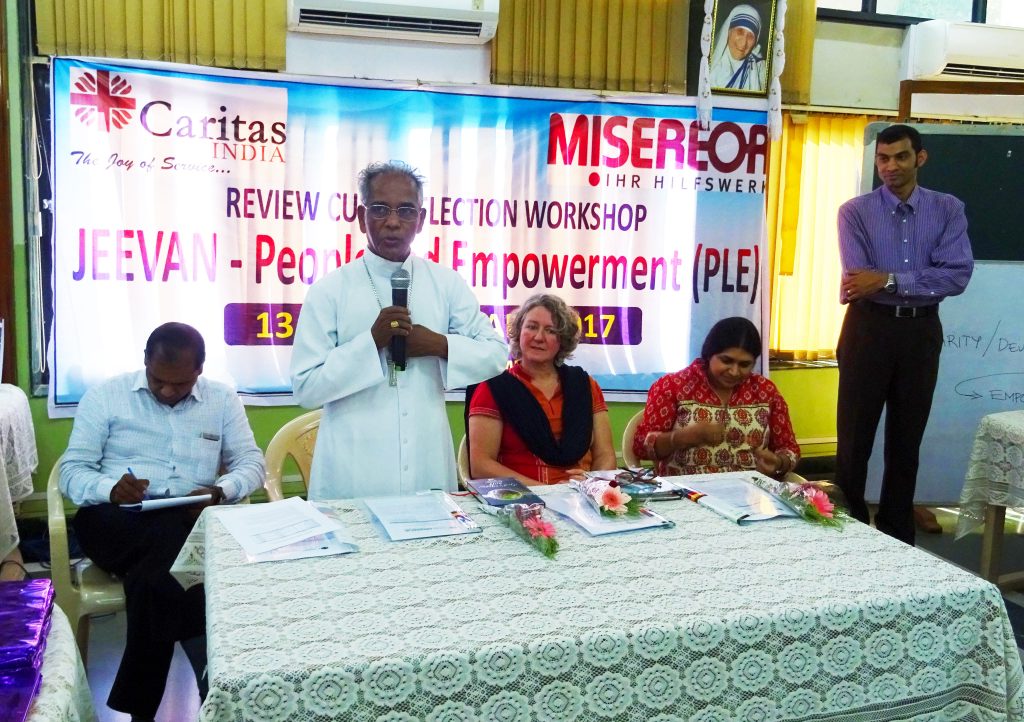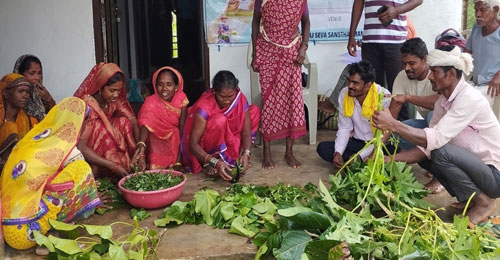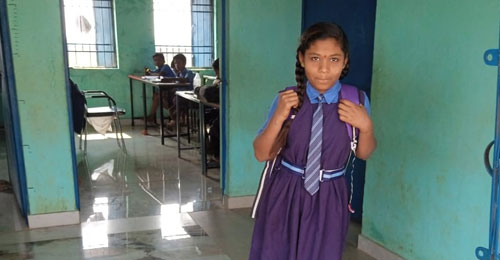Caritas India Partners in Maharashtra Resolve To Work on Agriculture Sovereignty

Caritas India and her partners in Maharashtra will work intensively to help communities achieve self-reliance in agriculture and food sovereignty.
Diocesan Social Service Societies (DSSSs), the local partners also decided to intensify their community mobilisation efforts for fostering grassroots-level movements that will address local issues. These decisions were taken in the 2-day review-cum-reflection workshop of JEEVAN People-Led Empowerment (PLE) programme that was recently held in Mumbai on February 14, 2017.

Archbishop of Nagpur, His Grace Abraham Viruthakulangara inaugurated the review-cum-reflection workshop and appreciated Caritas India and her partners for their good works among the most backward communities of Maharashtra. “The best way to help communities is empowering them and helping them become decision-makers. The intensity with which the partners have worked is evident from the large number of collective actions. People-Led Empowerment is a very effective mode of intervention to respond to the challenges of present times”, archbishop Abraham said.
Caritas India is supporting nine partners in Maharashtra to implement People-Led Empowerment (PLE) in the sectors of sustainable agriculture, good governance and tribal identity. During the review, Archbishop Abraham released a compendium of 100 impact stories on the collective actions of communities in the spheres of good governance, reviving traditional agriculture systems, eradication of social evils and creating community assets.
 Ms. Anja Mertineit, Officer Rural Development of Misereor, appreciated Caritas India and her partners for empowering communities and helping them initiate several grassroots level movements. “There is an urgent need to critically review the progress of the mobilisation processes on the field. The ongoing empowerment process needs to be translated into greater ownership of communities”, Ms. Anja said. She also accentuated the necessity of positively influencing and changing power structures so that marginalised and invisible communities become owners of change rather than mere participants.
Ms. Anja Mertineit, Officer Rural Development of Misereor, appreciated Caritas India and her partners for empowering communities and helping them initiate several grassroots level movements. “There is an urgent need to critically review the progress of the mobilisation processes on the field. The ongoing empowerment process needs to be translated into greater ownership of communities”, Ms. Anja said. She also accentuated the necessity of positively influencing and changing power structures so that marginalised and invisible communities become owners of change rather than mere participants.
During the reflection process all the partners expressed satisfaction over the gains realised by JEEVAN programme. They have decided to scale up their interventions for helping communities to secure decision-making participation in grassroots-level governance processes. Fr. Paul Moonjely, Assistant Executive Director of Caritas India spoke on the various stages in the progression of social work philosophy from charity-based approach to ownership-based approach. While appreciating Caritas India partners for their successes in organising and empowering communities, he urged them to work more vigorously on empowering communities and work towards communities’ ownership of grassroots level development processes.
Accounts of several people’s campaigns were shared during the review meeting. These included convening special Gram Sabha meetings by communities, agitations against alcoholism, revival of traditional art forms, women organising special Gram Sabha meetings with police protection, collective action for the construction of roads and massive water absorption trenches, collective farming and people’s campaign for cleanliness and fighting social evils.
Ms. Benazir Lobo, Country Head of Dialogue and Partnership Services (DPS) of Misereor, while addressing the reflection meeting lauded the contributions of partners in strengthening the voices of communities.
“Partners’ clarity on people’s empowerment is appreciable and their commitment to sustaining the empowering processes is praiseworthy”, Ms. Benazir added.
Dr. Saju MK, Manager West Zone of Caritas India, facilitated the sessions and stressed the need of strengthening solidarity of communities and helping them channel their strength of unity to address local development challenges. “Community-based organisations need to have clarity on the results that they pursue. If communities do not fully own up both processes and results, sustainability will always remain elusive”, he added.
Upcoming News
Strengthening migrant safety, well being and access to services in Baddi, Himachal Pradesh
Migrant workers remain the backbone of India’s industrial and service economy, yet they continue to...
LEARN MOREFARM field schools outsmart rats and crabs with farmer made solutions
Rats slicing through panicles. Crabs tunnelling into bunds. Seedlings clipped clean at the base. Farmers...
LEARN MOREHow Caritas India’s Khushaal Bachpan Programme Helped Neha Return to School
In the village of Chhadiya, 12-year-old Neha Verma had been absent from her Class 7...
LEARN MORE



 91 -11 - 2336 3390
91 -11 - 2336 3390  director@caritasindia.org
director@caritasindia.org 